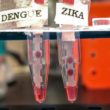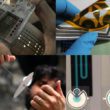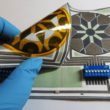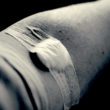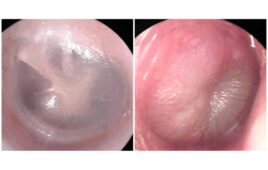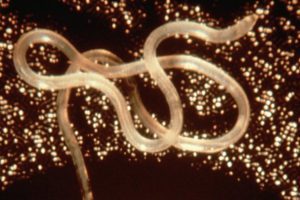
An adult loa loa worm that can cause river blindness. [Image from UC Berkeley]
River blindness is a disease that is caused by parasitic worms. The END Fund reports that about 37 million people had the disease in 2010 with more than 102 million people being at risk in Africa alone. The disease is transmitted through the bite of a black fly and is characterized by itchy skin, rashes, nodules under the skin and impaired vision.
Physical exams and skin biopsies help diagnose the presence of microfilariae under the skin while microscopes can examine the eye for lesions or larvae. If found early, the disease can be treated with the drug Mectizan.
University of California at Berkeley have developed the LoaScope technology that uses video from a microscope connected to a smartphone to detect and quantify infection from parasitic worms in a drop of blood.
The researchers suggest that the LoaScope gives fast and effective testing on the go and has allowed doctors in Cameroon to successfully treat more than 15,000 patients with ivermectin with no serious complications.
“This is not just a step forward for efforts to eliminate river blindness, but it is a demonstration that mobile microscopy — based on a mobile phone — can safely and effectively expand access to healthcare,” Daniel Fletcher, the study’s co-author and Berkeley bioengineering professor, said in a press release. “This work sets the stage for expanding the use of mobile microscopy to improve diagnosis and treatment of other diseases, both in low-resource areas and eventually back in the U.S.”
LoaScope adds on to the variety of diagnostic devices for developing countries that the medtech industry has seen this year – from a lab-on-a-chip to bring point-of-care diagnostics to smartphones to a paper-based test that quickly diagnoses Zika.

